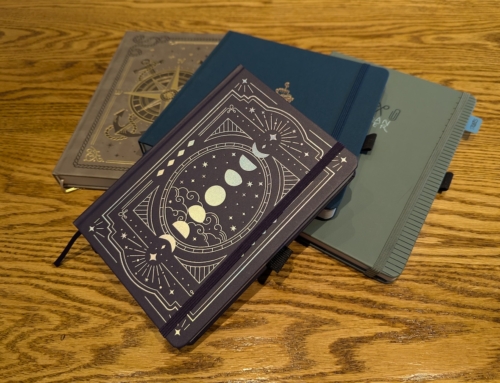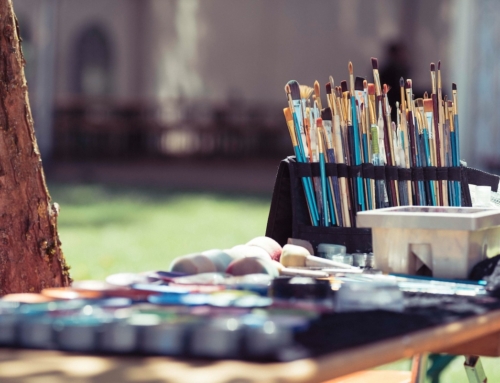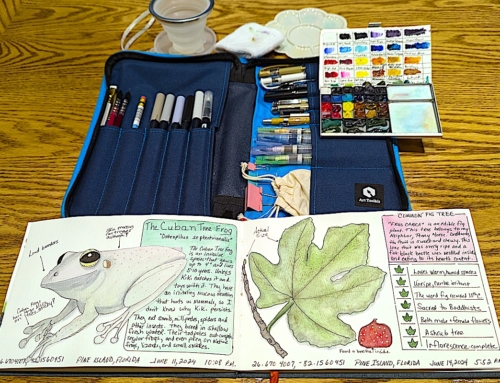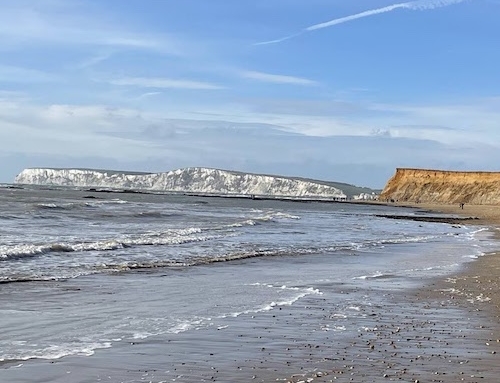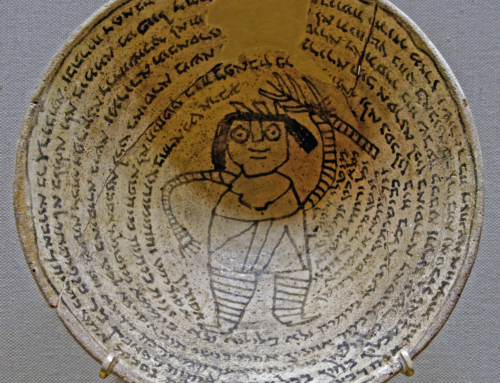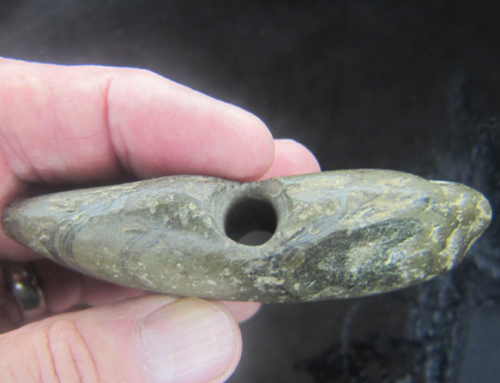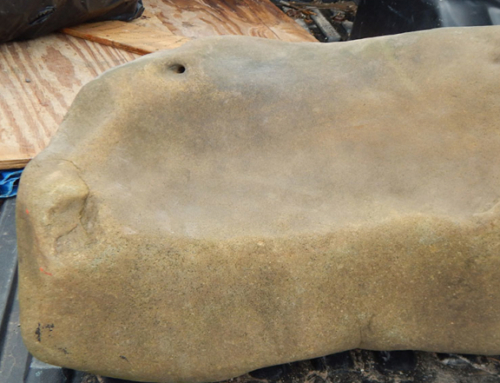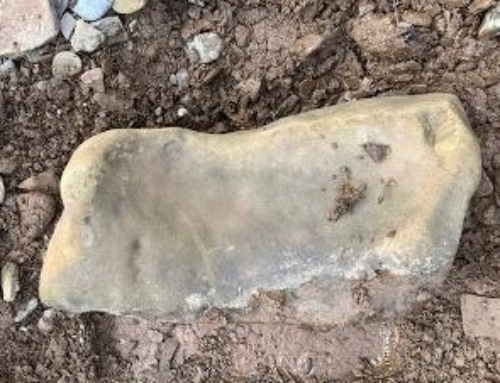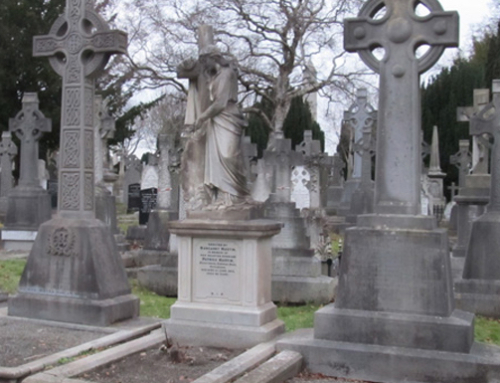The Devil’s Den in Florida is a dramatic freshwater spring, and popular for scuba diving and snorkeling. To reach the Den, visitors must descend narrow, limestone steps to the karst.
Lycoming College archaeology students got a rare view into a prehistoric cave structure created by an underground river while diving at Devil’s Den in Florida. The famous diving spot is a karst window, where a portion of a roof over a subterranean river collapses allowing people to see the water below. The trip to Florida over spring break was part of semester-long nautical archaeology class.
Another highlight of the trip was a visit to the St. Augustine Lighthouse Archaeological Maritime Program (LAMP) in Florida. While at the maritime program, they participated in workshops on mapping, knot tying, drawing, measuring from a datum, conducting a circle search, compass work, and laying down baselines. They visited LAMP’s conservation lab and were permitted behind the scenes to tour a new exhibit.
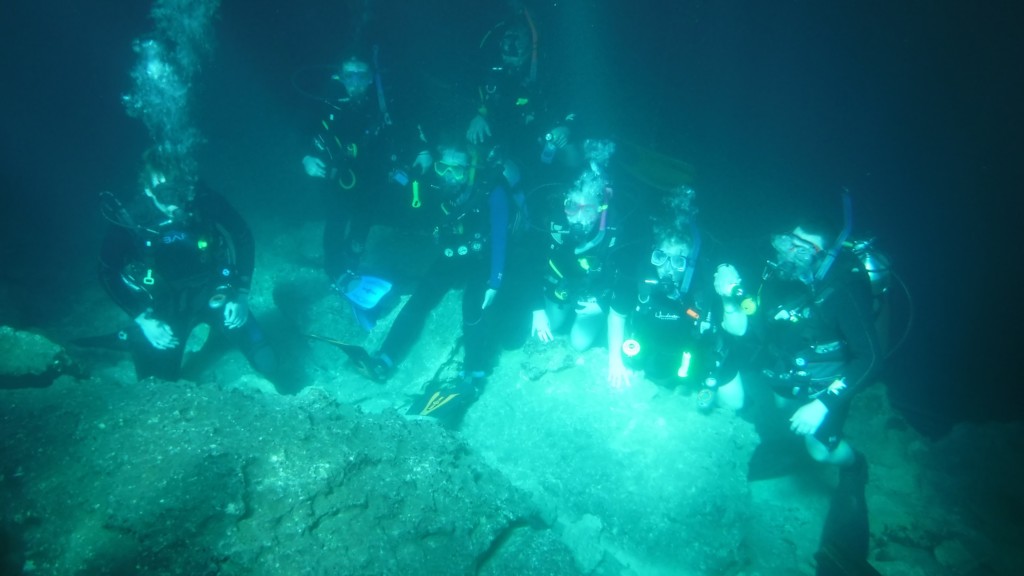
Lycoming College Nautical Archaeology students and instructor pose for a class photo underwater at the Devil’s Den, Florida.
Ben Conrad, a sophomore from Myerstown, Pa., has experience diving as a commercial technician, so adding PADI certification and being a scuba “buddy” were his priorities. “Our class was small and consisted of very different types of people. However, people become united while diving underwater in ways that are often times rather striking. I love experiencing that with people,” he said.
To prepare for the trip, students completed their PADI Open Water certification under the direction of Master Scuba Instructor Frank Morrow, owner of A Water Odyssey Scuba in Williamsport. An additional week was spent practicing buoyancy control and using mapping equipment underwater. As teams, they measured and recorded simulated underwater sites in the Lycoming College pool.

Lycoming College Nautical Archaeology students visit St. Augustine Beach at sunrise, and enjoy a walk along the fishing pier.
The students wrapped up their open-water dive training at Ponce de Leon Springs. While in Florida, the students visited historic St. Augustine, taking in the sights at Castillo de San Marcos and Fort Matanzas.
“As a history nerd, I loved seeing St. Augustine — Florida’s oldest, continuously inhabited city,” said Samantha Chovanec, a junior from Blairsville, Pa. “I have always loved the concept of creating or building something the way it was originally done. At LAMP, volunteers are building boats the way people built them in the middle of the 20th century, which shows a great appreciation for the past.”
While on campus, students created field journals and engaged in various hands-on archaeology-related activities such as learning how to read and make maps, locate geocaches, and wash and identify artifacts. They also excavated at a prehistoric American Indian site near the College.
Other members of the Nautical Archaeology class were Junior Christine Almassy of Fredericksburg, Va., Kristina Wetzel, a sophomore from Hanover, Pa., Richard Matel-Galatis, a senior from Hillsborough, N.J., and Darrin Coleman, a junior from Renovo, Pa.
Professor Robin Van Auken taught the course in nautical archaeology, which specifically studies human interaction with the sea, lakes and rivers through the investigation of material culture, shoreside structures and facilities, vessels, cargoes and submerged landscapes.



